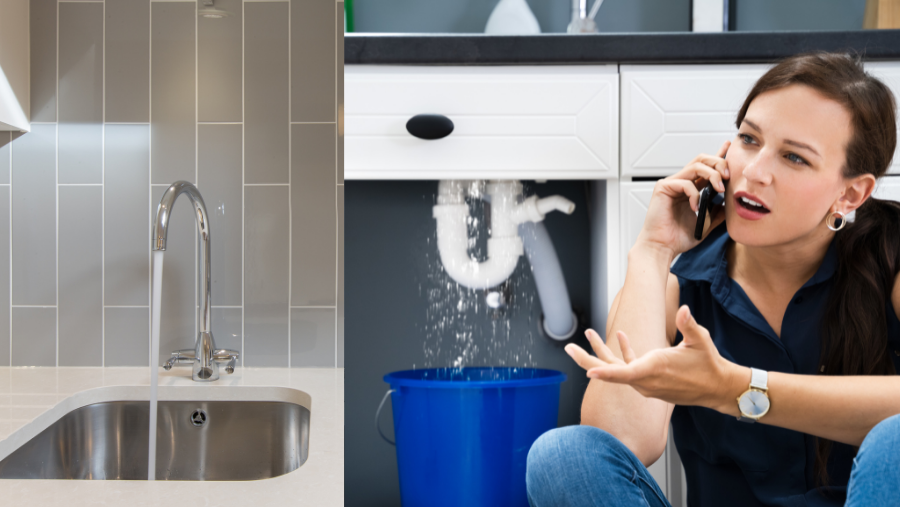Here below you can get a good deal of dependable insights regarding How to Prevent Bathroom Water Damage.

The washroom is incredibly at risk for wet build-up and also potential water damage as a result of the frequent use of water in it. This write-up offers basic examination techniques to assist detecting water damage dangers.
The constant use of water in the restroom makes it exceptionally vulnerable for damp build-up and also potential water damages. By inspecting it frequently, you can lower water relevant damages.
The complying with collection of examinations is easy to do and also should be done once in every 3 months in order to maintain your washroom in good shape and to stop potential water damages brought on by the tub, the shower, pipe joints and also plumbing, sinks, cabinets, and the bathroom
Do not disregard executing these examinations and be extensive while doing them. Remember that these straightforward inspections can save you a lot of cash by supplying very early signs for water damages
Sinks and also Cabinets
Sinks and also closets are revealed to dampness and also moisture everyday as well as are commonly forgotten. Evaluate routinely under the sink and on the countertop above it. Fix any kind of drip in the catch as it might recommend drainpipe issues. Check out the sink, slow draining pipes might show a blocked drain. Replace sink seals if they are fractured or loosened.
Bath tub and also Shower
The shower and also bathtub require special attention and upkeep. Examine the floor tiles as well as change if broken. Ensure that there is no missing cement between the ceramic tiles. Examine and change split caulking at joints where the walls meet the flooring or the tub. Clogged drains pipes as well as pipes troubles will certainly stop the bathtub from drying out as well as may indicate severe issues beneath the bath tub. Speak with a professional immediately to prevent architectural damage. Take notice of discolorations or soft locations around the tub walls as they might indicate an inner leak.
Plumbing
Signs for water damages are difficult to detect given that many pipes are set up inside the walls.
Pay unique attention to floor covering and wall surfaces moisture as well as stains as they might indicate an invisible plumbing issue. Examine moisture levels in adjacent rooms too.
The Toilet
The commode is a susceptible water joint. Examine the water lines and also look for leakages around the bathroom seat, in the hose, and also under the water storage tank. If you spot any kind of signs of moisture on the flooring around the toilet, look for leakages in the toilet rim as well as tank seals.
Know that hanging commode bowl antiperspirants increases the possibilities for obstructions.
Water Damage Signs In The Bathroom To Avoid Cleanup
Musty smell
This is one of the easiest signs to catch because musty smells are so odorous. The damp, earthy, moldy smell should be a big red flag. The smell will develop when moisture gets trapped in surfaces, and begins to facilitate mold growth. Leaking pipes under cabinets, inside walls, and behind shower fixtures will cause moisture to stay trapped and not dry, which will lead to mold growth and spread. As soon as you notice any musty smells in your bathroom, have it checked for hidden water damage and cleanup signs.
Visible mold
If the smell isn’t there to give it away, sometimes you will actually see mold growth. Finding mold in your bathroom is a serious problem, because mold is very harmful to your health. By the time mold growth is visible, it also means that water damage has already occurred and been present for some time. The only way the mold problem can be resolved is to find the source of the moisture and get it stopped. To safely and adequately remove mold, you need to have professionals handle the remediation. Do not waste any time in getting mold problems addressed, fixed, and sanitized so that you can protect you and your family from the many respiratory symptoms caused by mold exposure.
Damaged floors
Bathroom floors should be able to withstand some exposure to water while still remaining in good condition. However, when excess exposure or water leaks occur, they will begin to damage even the most water-resistant flooring. If you notice any cracking, bubbling, staining, or warping on your bathroom floors, there is probably a water leak somewhere causing the distortion. If you notice areas of the floor have become softer, or even have a spongy feeling, there is probably damage to the subfloor. Subflooring is typically made up of plywood. When plywood is exposed to water or moisture, it will absorb it. Once it has become saturated, the weight of the excess water will cause the wood to swell and soften. Check the floors in your bathroom frequently to catch any of these sings before they lead to damaged subflooring.
Changes on walls
When water leaks behind walls, it will cause changes in the drywall. Peeling plaster, blistering paint, and soggy wallpaper are all good indicators that excess water is building up behind the wall. Water leaking behind drywall will cause it to swell and be soft to the tough. If you start to notice gaps along the trim of your walls, or where tile meets the wall, it could also be a strong indicator that there is a leak behind the wall. Any changes, distortion, or damage on the walls should be evaluated as soon as you notice it to prevent further water damage and cleanup.

I have been very involved in Looking for Signs of Water Damage in the Bathroom and I'm hoping you liked our page. Please take the opportunity to share this post if you appreciated it. Thanks for taking the time to read it.
Get A Quote